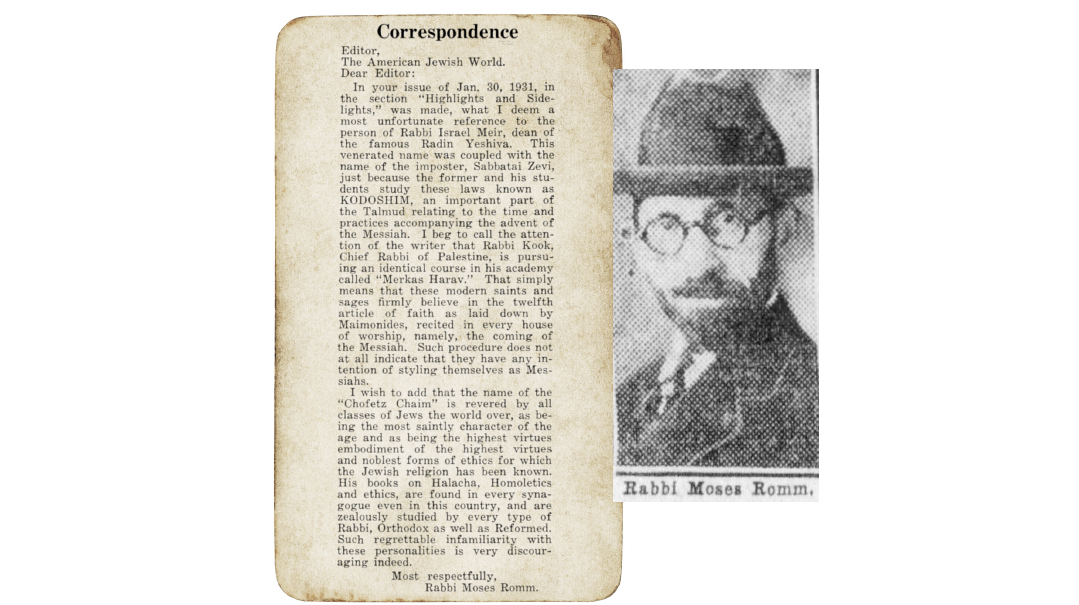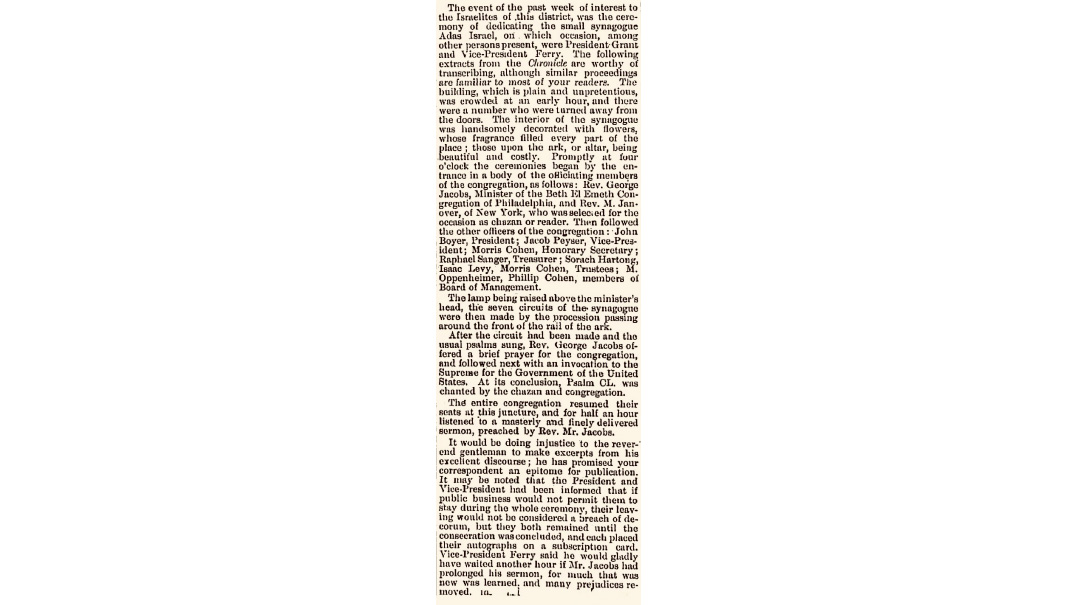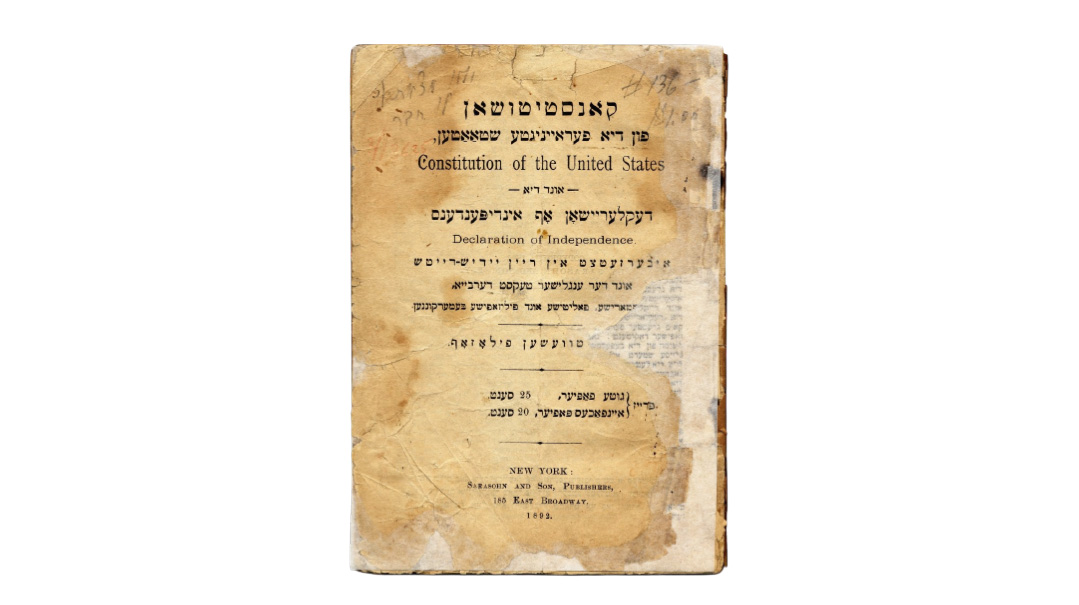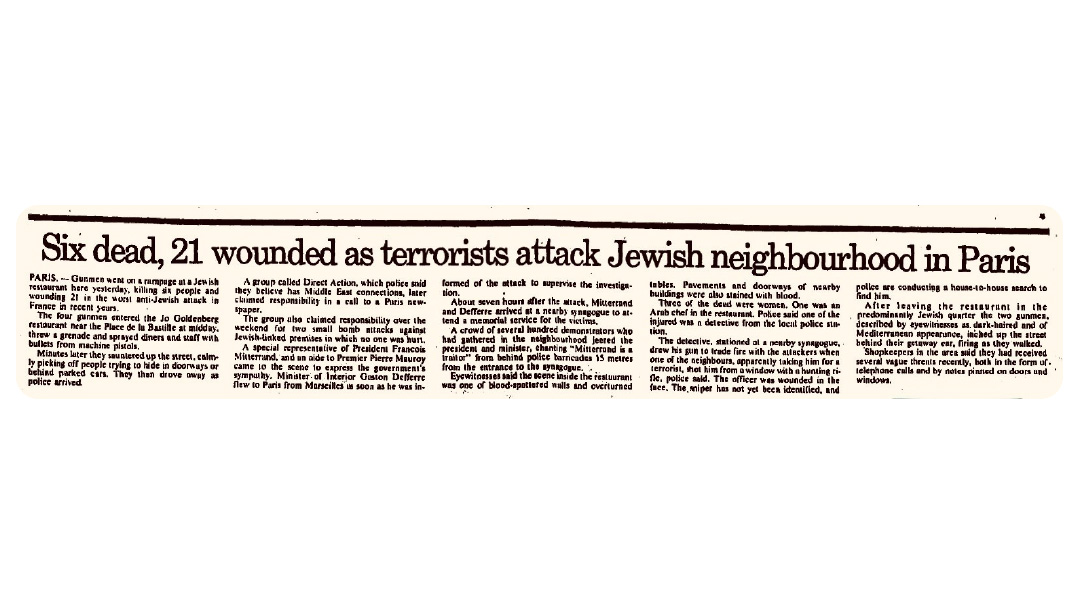Misguided About Mashiach
| August 24, 2021Anticipating Mashiach’s imminent arrival, the Chofetz Chaim used every opportunity to discuss it and every Jew’s duty to hasten the redemption

Title: Misguided About Mashiach
Location: Radin, Poland
Document: American Jewish World
Time: 1931
The repercussions of the 17th-century Shabbetai Tzvi catastrophe were felt across the Jewish world for more than two centuries. The trauma associated with the infamous false messiah spared nobody, and even the greatest of gedolim were viewed with suspicion when they publicly displayed any sort of messianic fervor.
By the 20th century, such fears had dissipated somewhat, save for the occasional misguided newspaper editor — in this case, the Minneapolis-based American Jewish World, which, in a misguided story titled “Another Sabbatai Zevi?” wrote as follows: “Vilna reports that the Tzaddik of Radin has prophesied the coming of the Messiah in the near future, and a course has been instituted at the yeshivah on methods of preparing for the coming of the Messiah.”
Anticipating Mashiach’s imminent arrival, the Chofetz Chaim used every opportunity to discuss it and every Jew’s duty to hasten the redemption. Toward the end of his life, his speech was constantly laced with such references. Talmidim of Radin even recalled how, when the Chofetz Chaim heard a noise while walking in the street, he would look up longingly to ask, “Mashiach?”
The Chofetz Chaim also stressed the importance of studying Seder Kodshim in depth, so that with Mashiach’s arrival there would be individuals proficient in its halachos. Toward that end, he established a Kollel Kodshim in Radin where aspiring rabbinic scholars (especially Kohanim) devoted several hours a day to studying these laws. He also authored Sefer Likkutei Halachos, a compendium of the relevant halachos of Seder Kodshim, and he republished the Midrash Toras Kohanim, accompanied by his own comprehensive commentary.
The Chofetz Chaim was not alone in this regard. In far-off Yerushalayim, a yeshivah that would eventually develop into Merkaz Harav was founded by Rav Avraham Yitzchak HaKohein Kook. Hoping to attract elite students from Europe and Palestine, the yeshivah considered Rav Shimon Shkop for a teaching position, as well as Rav Yitzchak Ruderman. Ultimately Mercaz Harav would be led by such figures as Rav Yaakov Moshe Charlap and Rav Yitzchak Arieli. Rav Kook incorporated numerous other subjects into the yeshivah curriculum alongside classic Talmudic study, including Tanach and the study of Kodshim. With messianic fervor in the air, a return to the intensive study of the laws pertinent to the Beis Hamikdash and korbanos would seem to be the finest expression of longing for Mashiach.
Standing Up for the Chofetz Chaim
Responding to the misguided American Jewish World piece was Rabbi Moses Romm, a native of Rakow, Poland, who served as a rav in Syracuse, Brooklyn, and (at the time of the letter) Minneapolis before moving to South Africa in 1932, where he was the first to translate the siddur into Afrikaans. He was a rabbi in several South African congregations until his passing there in 1976.
Kodshim Alumni
Founded in 1905, the Kollel Kodshim in Radin produced some of the greatest Torah leaders of that generation. Initially led by the rosh yeshivah, Rav Moshe Londinski, its prestigious alumni include Rav Elchonon Wasserman, Rav Yosef Shlomo Kahaneman (Ponevezher Rav), Rav Eliyahu Dushnitzer (mashgiach in Radin and Lomza Petach Tikvah), Rav Dovid Leibowitz, Rav Avraham Kalmanowitz, and Rav Meir Pam. In 1926, the Chofetz Chaim appointed his young son-in-law Rav Mendel Zaks to its helm.
From Mir to the Beis Hamikdash
The Chofetz Chaim once enjoyed a long Torah conversation with Rav Elazar Moshe Horowitz, the rav of Pinsk. Impressed with Rav Elazar Moshe’s profound knowledge of the more obscure topics in Seder Kodshim, the Chofetz Chaim asked him if he had ever met anyone else with such proficiency in the subject. Rav Elazar Moshe replied, “Rav Lipa Mirrer [Rav Yom Tov Lipman HaKohein of Mir, author of Malbushei Yom Tov] would be able to serve in the Beis Hamikdash with his eyes closed and not make a single mistake.”
(Originally featured in Mishpacha, Issue 875)
Oops! We could not locate your form.







